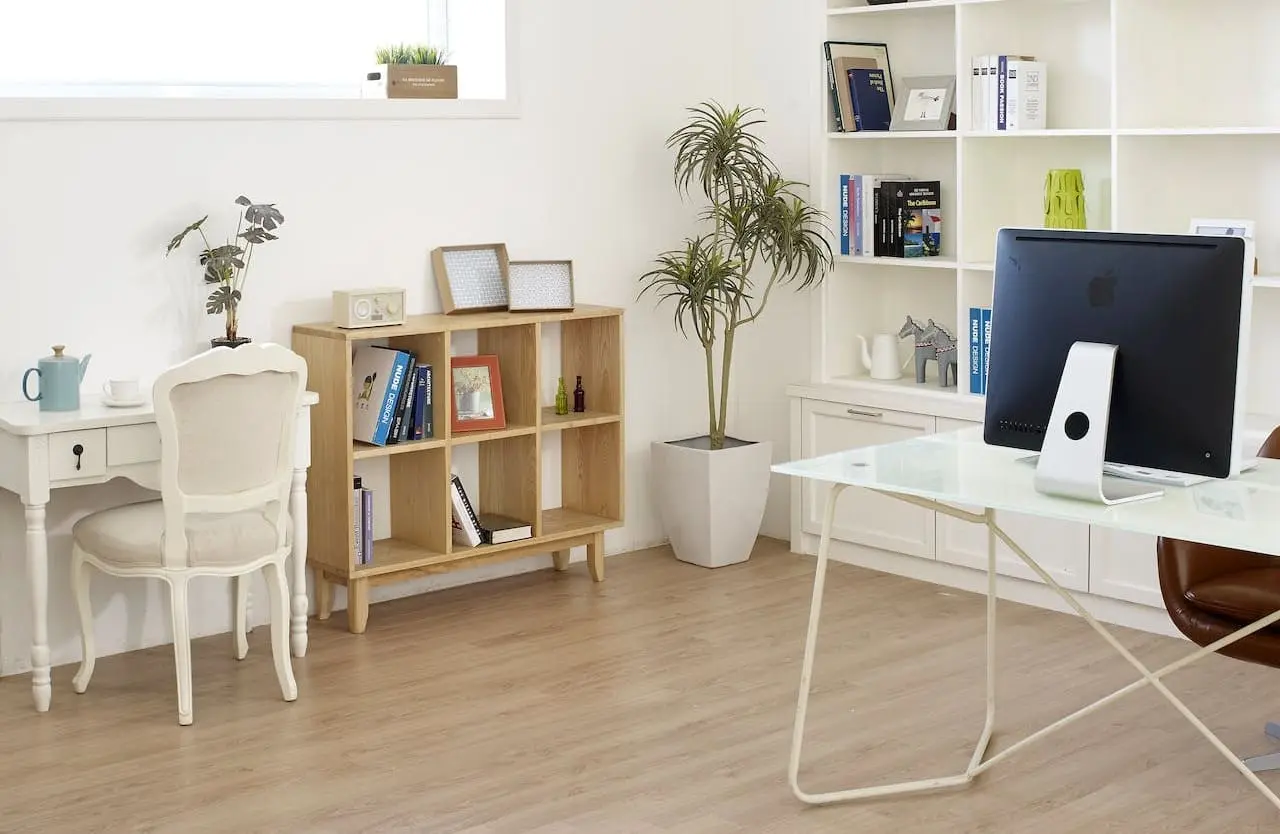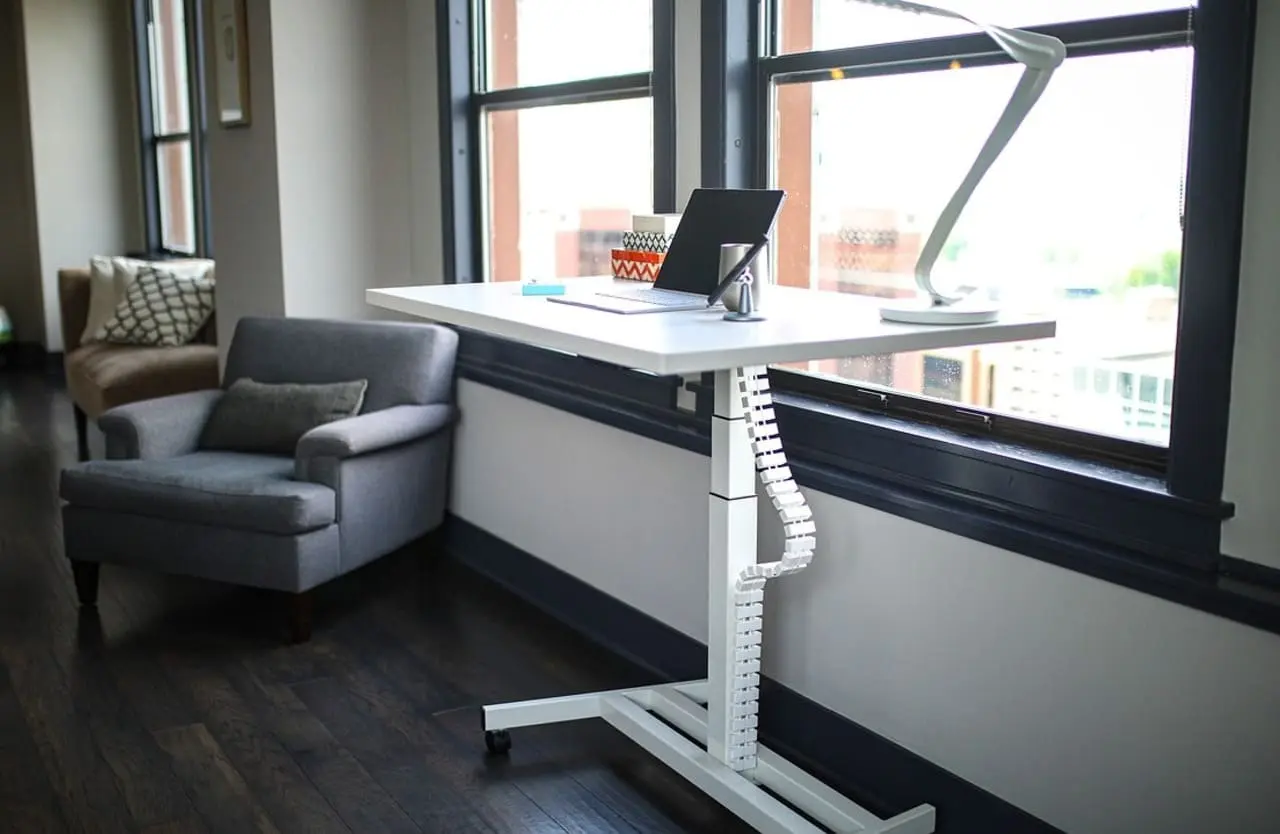In today’s fast-paced and technology-driven world, more and more people find themselves working from home. Whether you are a freelancer, a remote worker, or an entrepreneur, having a comfortable and productive home office is essential. One crucial aspect of creating an ideal workspace is investing in ergonomic home office furniture. In this complete guide, we will explore the importance of ergonomic furniture, understand the principles of ergonomic design, and provide you with practical tips on finding the right fit for your home office.
Contents
- The Importance of Ergonomic Home Office Furniture
- Understanding Ergonomic Design Principles
- Ergonomic Office Chairs: Finding the Right Fit
- Ergonomic Desk Options for a Comfortable Workspace
- Choosing the Right Keyboard and Mouse for Ergonomic Support
- Ergonomic Monitor Setup for Optimal Posture
- Additional Ergonomic Accessories for Your Home Office
- Benefits of Investing in Ergonomic Furniture
- Tips for Setting Up an Ergonomic Home Office
- Conclusion
The Importance of Ergonomic Home Office Furniture
Working long hours in front of a computer can take a toll on your body. Poor posture and uncomfortable furniture can lead to various health issues such as neck and back pain, eye strain, and even repetitive strain injuries. This is why investing in ergonomic home office furniture is crucial.
Ergonomic furniture is designed to support the natural alignment of your body, promote good posture, and reduce the risk of musculoskeletal disorders. By providing proper support and adjustability, ergonomic furniture enables you to work comfortably for extended periods, leading to increased productivity and overall well-being.
Understanding Ergonomic Design Principles
To make informed decisions when choosing ergonomic furniture, it’s essential to understand the principles behind ergonomic design. The main goal of ergonomic furniture is to minimize physical stress on the body and improve overall comfort.
One key principle of ergonomic design is adjustability. Look for chairs, desks, and accessories that offer multiple adjustment options, such as seat height, backrest angle, and armrest height. This allows you to customize the furniture to your body’s unique needs and preferences.
Another principle is proper body support. Ergonomic chairs should have lumbar support to maintain the natural curve of your lower back. Additionally, desk height and keyboard position should be adjustable to ensure that your arms and wrists are in a neutral position, reducing strain on joints and muscles.
Ergonomic Office Chairs: Finding the Right Fit
When it comes to ergonomic home office furniture, the chair is arguably the most critical investment you can make. A good ergonomic chair should provide adequate lumbar support, have adjustable seat height and depth, and offer adjustable armrests. It should also have a comfortable cushion that promotes good blood circulation and prevents pressure points.
When selecting an ergonomic chair, take the time to test it out and ensure that it properly fits your body. Sit back and check if the chair supports your lower back’s natural curve. Adjust the seat height so that your knees are at a 90-degree angle and your feet are flat on the floor. If the chair has armrests, adjust them to a height that allows your shoulders to relax and your elbows to be at a 90-degree angle.
Ergonomic Desk Options for a Comfortable Workspace
Alongside an ergonomic chair, a suitable desk is vital for creating a comfortable workspace. When choosing an ergonomic desk, consider the height, surface area, and storage options.
Ideally, the desk height should allow your arms to rest comfortably on the surface with your elbows at a 90-degree angle. This ensures that your wrists are in a neutral position while typing and reduces the risk of strain. Adjustable height desks are popular choices, as they allow you to switch between sitting and standing positions throughout the day, promoting movement and reducing the negative effects of prolonged sitting.
Additionally, consider the surface area of the desk. It should be spacious enough to accommodate your computer, monitor(s), keyboard, and other essential items, without feeling crowded. Built-in storage options, such as drawers or shelves, can help keep your workspace organized and clutter-free.
Choosing the Right Keyboard and Mouse for Ergonomic Support
Typing and using a mouse for extended periods can lead to discomfort and strain on your hands, wrists, and arms. To mitigate these risks, it’s crucial to select ergonomic keyboards and mice that promote a more natural hand and wrist position.
Ergonomic keyboards are designed with a split layout, allowing your hands to rest at a more natural angle. This helps reduce strain on your wrists and forearms. Look for keyboards with wrist rests to provide additional support and cushioning.
Similarly, ergonomic mice are shaped to fit the natural contours of your hand, reducing the need for excessive wrist movement. They often have a more vertical design, which places your hand in a handshake position, minimizing strain on your wrist and forearm muscles.
Ergonomic Monitor Setup for Optimal Posture
Proper monitor setup is essential for maintaining good posture and reducing eye strain. When positioning your monitor(s), consider the height, distance, and angle.
The top of your monitor should be at eye level or slightly below, so you can look straight ahead without straining your neck. Adjust the distance between your eyes and the screen to around an arm’s length, ensuring that you can read comfortably without squinting or leaning forward.
Angle your monitor(s) slightly downwards to reduce glare and reflections. If you use multiple monitors, make sure they are aligned, and the edges are at the same height to avoid neck and eye strain from constantly shifting your gaze.
Additional Ergonomic Accessories for Your Home Office
In addition to ergonomic chairs, desks, keyboards, and monitors, there are various accessories that can further enhance your home office ergonomics.
An adjustable monitor stand or arm can help you position your monitor(s) at the optimal height and angle. This not only improves your posture but also maximizes desk space.
A document holder can be a useful accessory if you frequently refer to physical documents while working. It positions the documents at eye level, reducing the need to constantly look down, which can strain your neck.
Wrist rests and mouse pads with gel or memory foam cushioning provide additional support and comfort while typing and using a mouse. They help reduce pressure on your wrists and promote a relaxed hand position.
Benefits of Investing in Ergonomic Furniture
Investing in ergonomic home office furniture offers numerous benefits that extend beyond comfort and productivity. By prioritizing your well-being and creating an ergonomic workspace, you can:
- Reduce the risk of musculoskeletal disorders and physical discomfort.
- Improve posture and prevent long-term health issues.
- Increase productivity and focus by eliminating distractions caused by discomfort.
- Enhance overall well-being and work-life balance.
Tips for Setting Up an Ergonomic Home Office
Now that you have a better understanding of ergonomic home office furniture, here are some practical tips for setting up your workspace:
- Choose a dedicated area in your home for your office, preferably away from distractions.
- Ensure proper lighting to reduce eye strain and fatigue.
- Incorporate regular breaks and stretching exercises to combat the negative effects of sitting for prolonged periods.
- Maintain good posture by sitting up straight, keeping your feet flat on the floor, and adjusting your chair and desk to the correct heights.
- Keep your workspace organized and clutter-free to promote focus and productivity.
Conclusion
Creating a comfortable and ergonomic home office is essential for anyone who spends long hours working from home. By investing in ergonomic home office furniture, such as chairs, desks, keyboards, and monitors, you can significantly improve your comfort, productivity, and overall well-being. Remember to prioritize adjustability, body support, and proper posture when selecting your furniture. With the right setup and proper ergonomic practices, you can create a workspace that promotes health, productivity, and success.


